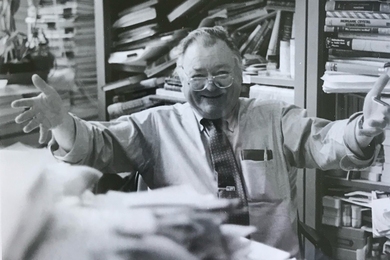Cyclists and fishermen alike stand to benefit from a new MIT center that couples researchers' engineering skills with an interest in sports.
At a January 6 IAP talk, Kim B. Blair described current and upcoming projects through the Center for Sports Engineering. Established last August, the center "focuses on new technologies and products to enhance all aspects of the sporting experience," said Dr. Blair, its director.
MIT has a long history in sports engineering. Over the years, for example, researchers in the Department of Aeronautics and Astronautics, where the new center is based, have developed vibration control systems for skis and tested tennis balls and rackets. "But these activities have always been conducted in individual labs and basements. We want to give them a home," Dr. Blair said.
Another reason for creating the new center is education. Key steps in engineering are to conceive, design, implement and operate. In the aerospace industry, however, this product development cycle can take up to 20 years. The new center will allow "student- or class-size products," Dr. Blair said. The development cycle for sports equipment is only one to four years.
Current projects through the center include selecting a softball that balances safety and fun for the Eastern Massachusetts Senior Softball League. The center is also creating a modern testing facility for competitive cyclists and triathletes.
Projects that Dr. Blair hopes to begin this spring include an instrumented rowing shell to detect parameters such as rowers' heart rates and strain on the oars, aerodynamic bike racing wheels, an automated strike zone detection system, and an actively controlled fishing rod.
A final reason for creating the new center: "the market is always ready for new ideas and it needs engineering expertise," he said. Last year he brought his triathlon bike to the MIT wind tunnel for testing, "and in 15 minutes Professor Mark Drela rattled off 20 things that are wrong with the design of the bike, and this is an expensive bike!"
A version of this article appeared in MIT Tech Talk on January 26, 2000.





